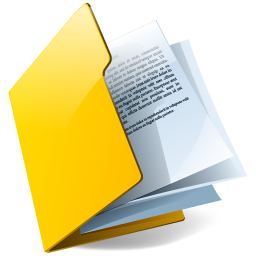Social Science (OLD)
CBSE class 6 Social Science videos, online tests, worksheets for free download. History (What, Where, How and When, on the Trail of the Earliest People, from Gathering to Growing Food, in the Earliest Cities,. What Books and Burials Tell Us, Kingdoms, Kings and an Early Republic, New Questions and Ideas, Ashoka, the Emperor Who Gave Up War, Vital Villages, Thriving Towns, Traders, Kings and Pilgrims, New Empires and Kingdoms, Buildings, Paintings and Books) Geography (The Earth in the Solar System, Globe : Latitudes and Longitudes,. Motions of the Earth, Maps, Major Domains of the Earth, Major Landforms of the Earth, Our Country – India, India : Climate, Vegetation and Wildlife) Civics (Understanding Diversity, Diversity and Discrimination, What Is Government, Key Elements of a Democratic Government, Panchayati Raj, Rural Administration, Urban Administration, Rural Livelihoods and Urban Livelihoods)

CBSE, JEE, NEET, CUET
Question Bank, Mock Tests, Exam Papers
NCERT Solutions, Sample Papers, Notes, Videos

myCBSEguide App
Complete Guide for CBSE Students
NCERT Solutions, NCERT Exemplars, Revison Notes, Free Videos, CBSE Papers, MCQ Tests & more.
CBSE class 6 Social Science syllabus, question papers, online tests and important questions as per CBSE syllabus. Notes, test papers and school exam question papers with solutions. Main topics are: History (What, Where, How and When, on the Trail of the Earliest People, from Gathering to Growing Food, in the Earliest Cities,. What Books and Burials Tell Us, Kingdoms, Kings and an Early Republic, New Questions and Ideas, Ashoka, the Emperor Who Gave Up War, Vital Villages, Thriving Towns, Traders, Kings and Pilgrims, New Empires and Kingdoms, Buildings, Paintings and Books) Geography (The Earth in the Solar System, Globe : Latitudes and Longitudes,. Motions of the Earth, Maps, Major Domains of the Earth, Major Landforms of the Earth, Our Country – India, India : Climate, Vegetation and Wildlife) Civics (Understanding Diversity, Diversity and Discrimination, What Is Government, Key Elements of a Democratic Government, Panchayati Raj, Rural Administration, Urban Administration, Rural Livelihoods and Urban Livelihoods)
An Introduction to History
When, Where and How
(a) The time frame under study.
(b) The geographical framework.
(c) Sources.
The Earliest Societies
(a) Hunting and gathering as a way of life, its implications.
(b) Introduction to stone tools and their use.
(c) Case study: the Deccan.
The First Farmers and Herders
(a) Implications of farming and herding.
(b) Archaeological evidence for crops, animals, houses, tools, pottery, burials, etc.
(c) Case study: the North-West, and North-East.
The First Cities
(a) The settlement pattern of the Harappa civilization.
(b) Unique architectural features.
(c) Craft production.
(d) The meaning of urbanism.
(e) Case study: the North-West.
Different Ways of Life
(a) The Vedas and what they tell us.
(b) A contemporary chalcolithic settlement.
(c) Case studies: the North-West and the Deccan.
Early States
(a) Janapadas to Mahajanapadas
b) Case study: Bihar, Magadha and the Vajji confederacy.
New Ideas
(a) Upanisads.
(b) Jainism.
(c) Buddhism.
The First Empire
(a) The expansion of the empire.
(b) Asoka
(c) Administration
Life in towns and villages
(a) The second urbanization.
(b) Agricultural intensification.
(c) Case study: Tamil Nadu.
Contacts with Distant lands
(a) The Sangam texts and long distance exchange. Suggested regions: the Tamil region, extending to south east Asia and the west.
(b) Conquerors from distant lands: north western and western India.
(c) The spread of Buddhism: north India to Central Asia.
Political Developments
(a) Gupta empire and Harshavardhana.
(b) Pallavas and Chalukyas.
Culture and Science
(a) Literature, including the Puranas, the epics, other Sanskrit and Tamil works.
(b) Architecture including early monasteries and temples, sculpture, painting (Ajanta);
(c) Science.
GEOGRAPHY
Rationale
Geography is an integral component of social science. At this stage learners are introduced to the basic concepts necessary for understanding the world in which they live. Geography will be introduced to promote the understanding of interdependence of various regions and countries. The child will be introduced to the contemporary issues such as global distribution of economic resources, gender, marginalized group, and environment and on going process of globalization.
The course at this stage comprises study of the earth as the habitat of humankind, study of environment, resources and development at different scales local, regional/national and the world. Objectives
The major objectives of the course are to:
1. Develop an understanding about the earth as the habitat of humankind and other forms of life.
2. Initiate the learner into a study of her/his own region, state and country in the global context.
3. Introduce the global distribution of economic resources and the on going process of globalization.
4. Promote the understanding of interdependence of various regions and countries
THE EARTH - OUR HABITAT
Topics
Planet: Earth in the solar system.
Globe: the model of the earth, latitudes and longitudes; motions of the earth rotation and revolution.
Maps: essential components of maps distance, directions and symbols.
Four realms of the earth: lithosphere, hydrosphere, atmosphere and biosphere: continents and oceans.
Major relief features of the earth.
India in the world: physiographic divisions of India – mountains, plateaus and plains; climate; natural vegetation and wild life; need for their conservation.
SOCIAL AND POLITICAL LIFE
Rationale
At the elementary stage, the idea is to introduce students to various aspects of political, social and economic life. This will be done through a preliminary focus on certain key concepts, knowledge of which is essential to understand the functioning of Indian democracy. These concepts will be explained using imaginary narratives that allow children to draw connections between these and their everyday experiences. There will be no attempt made at this level to cover all aspects of India’s democratic structure, but rather the effort is more to provide an overview with which the child learns to critically engage by constructing herself as an interested citizen of a vibrant and ongoing democratic process. The focus on the real-life functioning of institutions and ideals is to enable the child to grasp the deep interconnectedness between the political and social aspects of her everyday life, as well as the impact of these two in the realm of economic decision-making.
Objectives
• To enable students to make connections between their everyday lives and the issues discussed in the textbook;
• To have students imbibe the ideals of the Indian Constitution;
• To have children gain a real sense of the workings of Indian democracy: its institutions and processes;
• To enable students to grasp the interconnectedness between political, social and economic issues;
• To have them recognize the gendered nature of all of the issues raised;
• To have them develop skills to critically analyze and interpret political, social and economic developments from the point of view of the marginalized;
• To have them recognize the ways in which politics affects their daily lives.
DIVERSITY AND INTERDEPENDENCE
Rationale
In the first year of the new subject area, ‘Social and Political Life’ the themes of diversity, interdependence and conflict are to be focused on. This is done through first elucidating aspects of social diversity through a discussion of linguistic diversity as well as the diversity of art forms. In discussing these topics the idea is to celebrate diversity and interdependence while also highlighting that this can be zone for conflict. The idea of government is introduced at this grade and then elaborated upon through a discussion of the types of government at the local level, as well as different aspects of their functioning. Through focusing chapters on concrete, though narrativised, Syllabus for Classes at the Elementary Level 178 examples of land administration in the rural context and sanitation services in the urban one, the attempt is to have the child gain an experiential understanding of the ways in which local government functions. The last chapter through its focus on how people make a living in the rural and urban context discusses issues of the diversity of livelihoods.
Objectives
The specific objectives of the course, where it is not clear from the rationale of the approach, are indicated beside the themes to be taught in the course.
Themes
UNIT 1: Diversity
In this unit we focus on various aspects of diversity. The first section begins by having the child recognize diversity as a fact of being human and understanding diversity as different ways of doing the same thing. The second section builds on this by having the child interrogate societal prejudices against diversity, recognizing that the self can be made up of multiple identities and that the Constitution compels us to respect diversity.
Section 1
• Diversity as a fact of being human.
• What diversity adds to our lives.
• Diversity in India.
Section 2
• Prejudice and discrimination.
• Inequality and discrimination.
• Recognition of multiple identities in oneself.
• The Constitution and respect for diversity.
UNIT 2: Government
This unit introduces the student to the idea of government. The first section focuses on the need for it, the history of adult franchise, the various types of governments that exist at present. The second section discusses the key elements that influence the functioning of democratic government.
Section 1
• The need for government.
• Decision-making and participation.
• The quest for universal adult franchise through examples of the sufferagate movement and the antiapartheid struggle.
• Various forms of government and absence of collective sanction.
Section 2
Key elements that influence the functioning of democratic government:
• Participation and accountability.
• Resolution of Conflict.
• Concerns for Equality and Justice.
UNIT 3: Local Government
This unit familiarizes the student with both rural and urban local government. It covers the Panchayati Raj, rural administration and urban government and administration. The effort is to have the child draw contrasts and comparisons between the ways in which urban and rural local government function.
Section 1
Panchayati Raj
• Description of panchayat including electoral process, decision making, implementation of decisions
• Role of a gram sabha
• Women and the panchayat
Section 2
Urban Local Government
• Municipal corporation elections, decision making structures
• The provision of water and the work of the municipal corporation
• Citizens protests to get their grievances addressed
Section 3
Rural Administration
• Focus on a land dispute and show the role of local police and patwari.
• On land records and role of patwari.
• On the new inheritance law.
UNIT 4: Making a Living
This unit focuses on individuals earn a livelihood both in the rural and the urban context. The rural context focuses on various types of farmers and the urban one on various types of occupations people engage in to earn an income. The student should be able to compare and contrast the urban and the rural context.
Section 1
Rural Livelihoods
• Various types of livelihoods prevalent in a village.
• Different types of farmers: middle farmer, landless labourers and large farmers.
Section 2
Urban Livelihoods
• Difference between primary, secondary and tertiary occupations.
• Descriptions of various types of livelihoods including vegetable vendor, domestic servant, garment worker and bank employee.
• Differences between self-employed, regular employment and wage employment.
• The inter linkage between rural and urban lives through a discussion of migration.

myCBSEguide
Trusted by 1 Crore+ Students

Test Generator
Create papers online. It's FREE.

CUET Mock Tests
75,000+ questions to practice only on myCBSEguide app
 myCBSEguide
myCBSEguide





